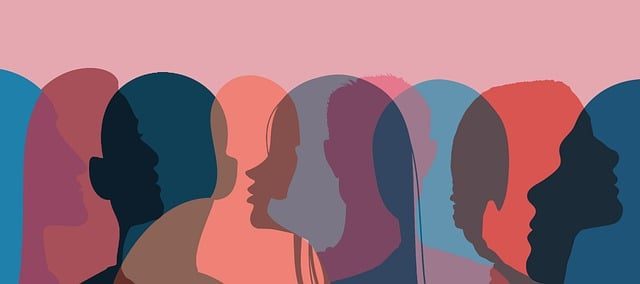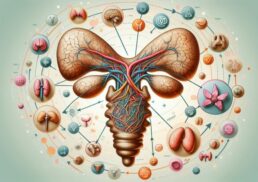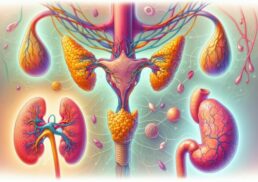In a world that increasingly recognizes the importance of understanding and embracing gender diversity, it is crucial to delve into the intricate tapestry of gender identity. This comprehensive guide will navigate the complexities of gender identity and its spectrum, examining the biological, social, and psychological factors at play. By the end, you will gain a more profound insight into the experiences of transgender individuals, the challenges they face, and the steps we can take to support them and foster a more inclusive society.
Table of Contents
Key Takeaways
Gender identity is an individual’s innate sense of self that differs from their sex assigned at birth, and should be respected and supported.
Non-binary identities have a long history of being accepted in many cultures, widening our understanding of gender.
Gender expression is the outward display of one’s gender identity. Allyship involves educating oneself about transgender issues to provide support for loved ones.
Defining Gender Identity and Its Importance

Gender identity is a deeply personal experience, referring to a person’s gender identity as an individual’s innate sense of being male, female, both, or neither, which may differ from their sex assigned at birth. Both an individual’s core sense of self and societal expectations influence this complex concept, making its comprehension key. To better understand this topic, it is important to explore various gender identity definitions, including male gender identity. Gender identity is shaped by various factors such as:
biology
social norms
legal recognition
personal encounters
It is essential to respect and support those with diverse gender identities.
It should be highlighted that gender identity differs from sexual orientation, which sexual orientation refers to as an individual’s enduring physical, romantic, and emotional attraction to others. Recognizing these nuances allows us to foster understanding and acceptance of the wide-ranging experiences of gender-diverse individuals.
Core Gender Identity
Core gender identity refers to an individual’s deeply ingrained understanding of their own gender, which may or may not align with their assigned sex at birth. This sense of identity develops through a combination of biological, social, and cognitive factors during childhood. As children grow and interact with their environment, they become increasingly aware of the concept of gender and start to express their child’s gender identity through clothing, toys, and social interactions.
The evolution of core gender identity is not a uniform process, as each individual’s journey is unique and influenced by various factors. It’s crucial to acknowledge this complexity and provide appropriate support and care for children experiencing gender incongruence.
Understanding and respecting the intricate development of core gender identity paves the way for a more inclusive and empathetic society.
Societal Influences on Gender Identity
Societal influences on gender identity encompass cultural norms, expectations, and gender roles that shape how individuals perceive and express their gender. These norms dictate what is considered acceptable or appropriate for individuals based on their gender, influencing how they view themselves and how others perceive them. Cultural norms can differ greatly between various societies and can affect various aspects of gender identity, such as self-expression, gender roles, and societal expectations, which may differ from the sex assigned at birth.
Societal expectations can be restrictive and perpetuate gender stereotypes. For instance, women are often expected to be nurturing and polite, while men are anticipated to be strong and aggressive. These traditional gender roles can impede self-expression and contribute to power imbalances, shaping how individuals perceive and comprehend their own gender identity. Challenging these societal influences and promoting a more flexible understanding of gender allows for a more inclusive world, enabling individuals to express their authentic selves.
Learn more, visit Social Influences on Gender Development: Theory and Context.
Understanding the Spectrum of Gender Identities
The spectrum of gender identities goes far beyond the traditional binary of male and female, encompassing a vast array of identities such as non-binary, genderqueer, and genderfluid. This rich tapestry of gender experiences highlights the evolving nature of gender and the importance of recognizing its fluidity.
Given that society often tries to categorize people into rigid boxes, it’s vital to understand and embrace this diversity, as even the diagnostic and statistical manual acknowledges the complexity of human behavior.
Non-Binary Identities
Non-binary identities are those that do not conform to the traditional binary of male and female, challenging societal norms and expectations. These identities include terms such as:
Agender
Bissu
Fa’afafine
Genderqueer
Hijra
Genderfluid
Non-binary identities have a long-standing history across cultures, with many societies recognizing multiple genders and unique positions within their communities.
The acceptance of non-binary identities expands our understanding of gender and cultivates a more inclusive and empathetic society.
The Fluidity of Gender
Gender fluidity is the concept that gender is not fixed but can fluctuate over time, allowing for a more comprehensive comprehension of identity. This idea challenges traditional gender roles by rejecting the notion that gender is static and binary. Instead, gender fluidity acknowledges that one’s gender identity and expression can evolve over time, permitting individuals to transcend the boundaries of traditional gender expectations.
Recognizing gender fluidity fosters a more inclusive and diverse perspective of gender. By recognizing that gender is not a rigid construct, we can better support individuals who identify with various gender identities and expressions. The acknowledgment of gender fluidity encourages open-mindedness, understanding, and respect for the diverse experiences of others.
Gender Expression and Its Connection to Gender Identity
Gender expression is the external manifestation of one’s gender identity, which can be expressed through:
behavior
clothing
body characteristics
voice
This outward display allows individuals to communicate their gender to the world and can be influenced by both personal preferences and societal expectations.
Gender expression is intimately linked to gender identity, as it is the manner in which individuals present themselves to the world in terms of their gender.
Personal Sense of Style
An individual’s personal sense of style is a key facet of their gender expression. Through clothing, hairstyle, accessories, and overall appearance, a person can communicate their gender identity and align their external presentation with their internal feelings. Personal style can be quite varied, incorporating elements traditionally associated with masculinity, femininity, or a combination of both, depending on an individual’s unique expression of their gender identity.
Grooming practices, such as hair care and skincare routines, also play a significant role in gender expression. These choices allow individuals to further align their external appearance with their gender identity. Accessories, such as:
jewelry
bags
hats
shoes
can also convey specific gender cues or challenge traditional gender norms, enabling individuals to express their unique gender identity and presentation.
Body Language and Communication
Body language and communication styles play a significant role in conveying one’s gender identity. Posture, gestures, facial expressions, and speech patterns can all contribute to how an individual’s gender is perceived by others. Even though body language significantly contributes to gender expression, it’s worth remembering that it doesn’t solely define one’s gender identity; it is just one component of the multifaceted tapestry of gender.
Research has shown that some speech patterns are linked to gender identities, such as articulation of certain sounds, intonation patterns, and speech characteristics. However, it is essential to recognize that non-binary or gender fluid individuals may not have unique body language or communication styles. Variations in body language and communication styles are observed among individuals, regardless of their gender identity. This highlights the importance of respecting people as individuals and not making assumptions based on their gender identity.
Biological Factors and Their Impact on Gender Identity
Genetics and hormones, as biological factors, can influence gender identity and contribute to the development of transgender identities. While biological factors alone do not determine one’s gender identity, they can play a significant role in shaping how an individual understands and experiences their gender.
Genetic Contributions
Genetic contributions to gender identity are complex and not yet fully understood, but research suggests a potential link between certain genes and gender identity. For example, the SRY gene found on the Y chromosome is integral in determining gender identity, producing the sex-determining region Y protein responsible for the formation of testes and the differentiation of pre-Sertoli cells.
Recent studies have investigated the potential genetic factors that may influence gender identity, identifying potential genes that could be linked to gender identity, such as:
WDR45B
SLC6A20
NHLH1
PLEKHA5
UBALD1
SLC37A1
ARL6IP1
GRASP
NCOA6
ABT1
However, further research is required to gain a comprehensive understanding of the genetic influences on gender identity.
Hormonal Influences
Hormonal influences during prenatal development can affect the formation of gender identity, with variations in hormone levels potentially contributing to transgender identities. The primary hormones influencing gender identity during prenatal development are androgens, particularly testosterone.
Studies have indicated that variations in hormone levels during prenatal development, particularly prenatal testosterone exposure, can be associated with transgender identities. Higher levels of prenatal testosterone in individuals assigned female at birth and lower levels in individuals assigned male at birth may be linked to the development of gender dysphoria. Furthermore, genetic factors and the interaction between hormones and brain development may also be contributory factors in early gender development and transgender identities.
Navigating Gender Transition and Medical Interventions
Gender transition involves a combination of social, medical, and surgical interventions to align an individual’s external appearance with their internal gender identity. This process can be a challenging and emotional journey for transgender individuals, but with the right support and resources, it can lead to a more authentic and fulfilling life.
Social Transition
Social transition refers to the process of adopting a gender role that is congruent with one’s gender identity. This involves changes in name, pronouns, and presentation to reflect one’s gender identity in everyday life. Social transition can be a vital step in the journey toward living authentically and can significantly impact a transgender person’s mental health and overall well-being.
Mental health professionals play a critical role in providing guidance and referrals for transgender individuals seeking to undergo a social transition. Through therapy and other support services, transgender individuals can navigate the complexities of social transition and build a network of understanding friends and family members who can provide emotional and practical support throughout the process.
Hormone Replacement Therapy
Hormone replacement therapy (HRT) involves the use of hormones to induce physical changes that align with an individual’s gender identity. For transgender women, HRT can lead to feminization, breast formation, and reductions in male pattern characteristics, while for transgender men, it can result in increased body fat, body and facial hair growth, and voice changes. HRT plays a significant role in the gender transition process and can help transgender individuals achieve a body that aligns with their gender identity.
It’s advisable to consult with a healthcare professional specializing in transgender health when considering HRT. They can provide guidance regarding the potential risks and benefits of hormone therapy, as well as personalized recommendations for treatment.
Surgical Procedures
Surgical procedures, such as gender-affirming surgeries, can help transgender individuals achieve a body that aligns with their gender identity. These surgeries are an essential component of the gender transition process for some individuals, allowing them to experience a more authentic and fulfilling life.
Gender-affirming surgeries can include procedures such as chest reconstruction, genital reconstruction, and facial feminization or masculinization surgeries. Consultation with a specialized surgeon is necessary to determine the most appropriate surgical options for each individual.
Gender-affirming surgeries can significantly impact a transgender person’s mental health and overall well-being, making them an important aspect of gender transition.
Mental Health and the Challenges Faced by Transgender People
Unique mental health challenges are often encountered by transgender individuals, including gender dysphoria and coping with societal discrimination and stigma. A lack of understanding and support from friends, family, and healthcare providers can intensify these challenges, making it essential to provide appropriate resources and care for this population.
Gender Dysphoria
Gender dysphoria, formerly known as gender identity disorder, is the distress experienced when one’s assigned sex at birth does not align with their gender identity. This distress can manifest in various ways, including depression, anxiety, and suicidal ideation. Gender dysphoria can be a significant barrier to mental health and well-being for transgender individuals and often requires professional support and intervention.
Diagnosing gender dysphoria in children and adolescents is a complex process that involves a behavioral health evaluation and consultation with mental health professionals. Treatment options for gender dysphoria may include therapy, support groups, and medical interventions such as hormone replacement therapy or gender-affirming surgeries.
Coping Strategies and Support
Coping strategies and support for transgender individuals facing mental health challenges are crucial for promoting resilience and well-being. Some strategies that may be helpful include:
Seeking social and professional support
Developing self-efficacy
Reframing negative thoughts and beliefs
Acting “as if” you already possess the qualities or abilities you desire
Practicing self-care and prioritizing your well-being
Working with a mental health professional can also be beneficial in developing personalized coping strategies to navigate the unique challenges faced by transgender individuals, following guidelines from the World Health Organization.
Building a network of understanding friends and family members can also be beneficial for transgender individuals. Supportive friends who comprehend and respect their gender identity can provide a sense of validation and acknowledgement, reducing feelings of loneliness and isolation. Furthermore, these friends can offer emotional support and practical assistance, such as helping with name and pronoun usage or accompanying them to medical appointments.
Allyship and Supporting Transgender Loved Ones
Allyship involves educating oneself about transgender issues and advocating for the rights and well-being of transgender individuals. Allies can significantly impact the lives of transgender loved ones by offering understanding, support, and resources, aiding them in navigating their unique experiences.
Educating Yourself
Educating yourself about gender identity and transgender experiences is crucial for understanding and supporting loved ones. You can start by reading books, articles, and online resources written by transgender individuals and experts in the field. Attending workshops, conferences, and support groups focused on transgender issues can also provide valuable insights and perspectives.
Engaging in conversations with transgender individuals and listening to their experiences can help deepen your understanding and empathy. By educating yourself and staying informed, you can become a more effective ally and advocate for transgender rights and well-being.
Advocacy and Activism
Advocacy and activism entail leveraging your voice and resources to champion transgender rights and combat societal discrimination and stigma. As an ally, you can support transgender individuals by advocating for their rights and equality, raising awareness about the issues they face, and pushing for policy changes to protect their rights.
Through protests, campaigns, and advocacy efforts, you can help create a more inclusive and equitable society for transgender individuals. By standing up for transgender rights and challenging societal discrimination, you can make a meaningful difference in the lives of transgender individuals and contribute to a more understanding and compassionate world.
Summary
In conclusion, understanding and embracing the complexities of gender identity is essential for fostering a more inclusive and empathetic society. By exploring the biological, social, and psychological factors that shape gender identity, supporting transgender individuals through their gender transition journey, and advocating for their rights, we can promote acceptance and challenge societal discrimination. Together, we can work towards a world where everyone’s gender identity is respected and celebrated.
Frequently Asked Questions
What is an example of gender identity?
An example of gender identity is when a person identifies as male and is most comfortable referring to his personal gender in masculine terms. His gender role may carry expectations around clothing and behavior.
What is true gender identity?
Gender identity is each person’s internal and individual experience of gender, their sense of being a woman, a man, both, neither, or anywhere along the gender spectrum. It may not be outwardly visible to others, and can differ from the sex assigned at birth. There is no right or wrong way to look like a particular gender.
What is the purpose of gender identity?
Gender identity is the internal and individual experience of one’s gender, which may or may not match their birth-assigned sex. It is more than just the outward presentation and is a core sense of self which can be different for transgender and gender fluid individuals.
What are the 4 gender pronouns?
The four gender pronouns are he/him/his, she/her/hers, they/them/theirs, and ze/hir/hirs. These pronouns allow people to express their gender in ways that feel most comfortable and accurate for them.
What is the difference between gender identity and sexual orientation?
Gender identity is an individual’s innate sense of their own gender, while sexual orientation is an individual’s enduring physical, romantic, and emotional attraction to others.









